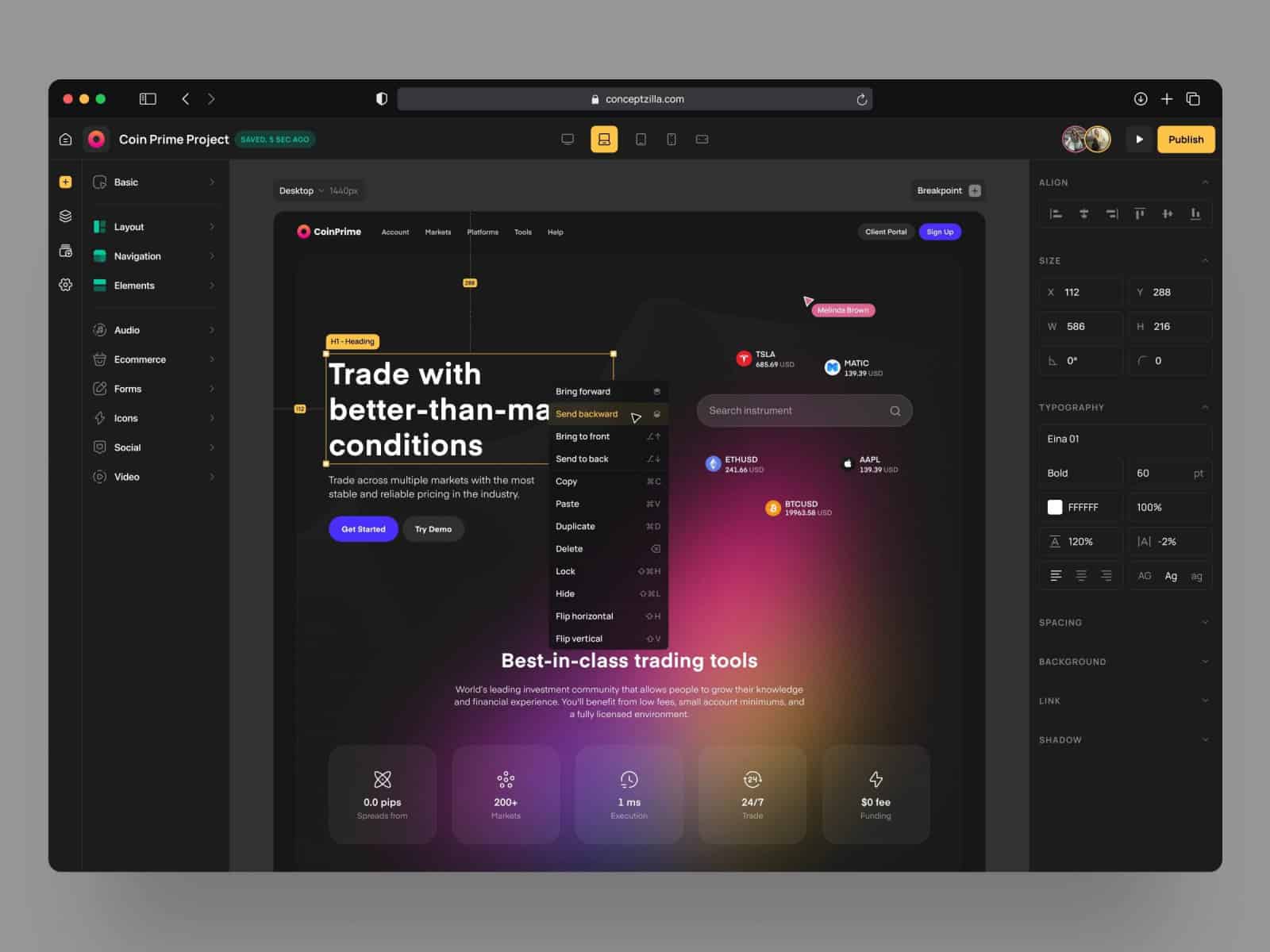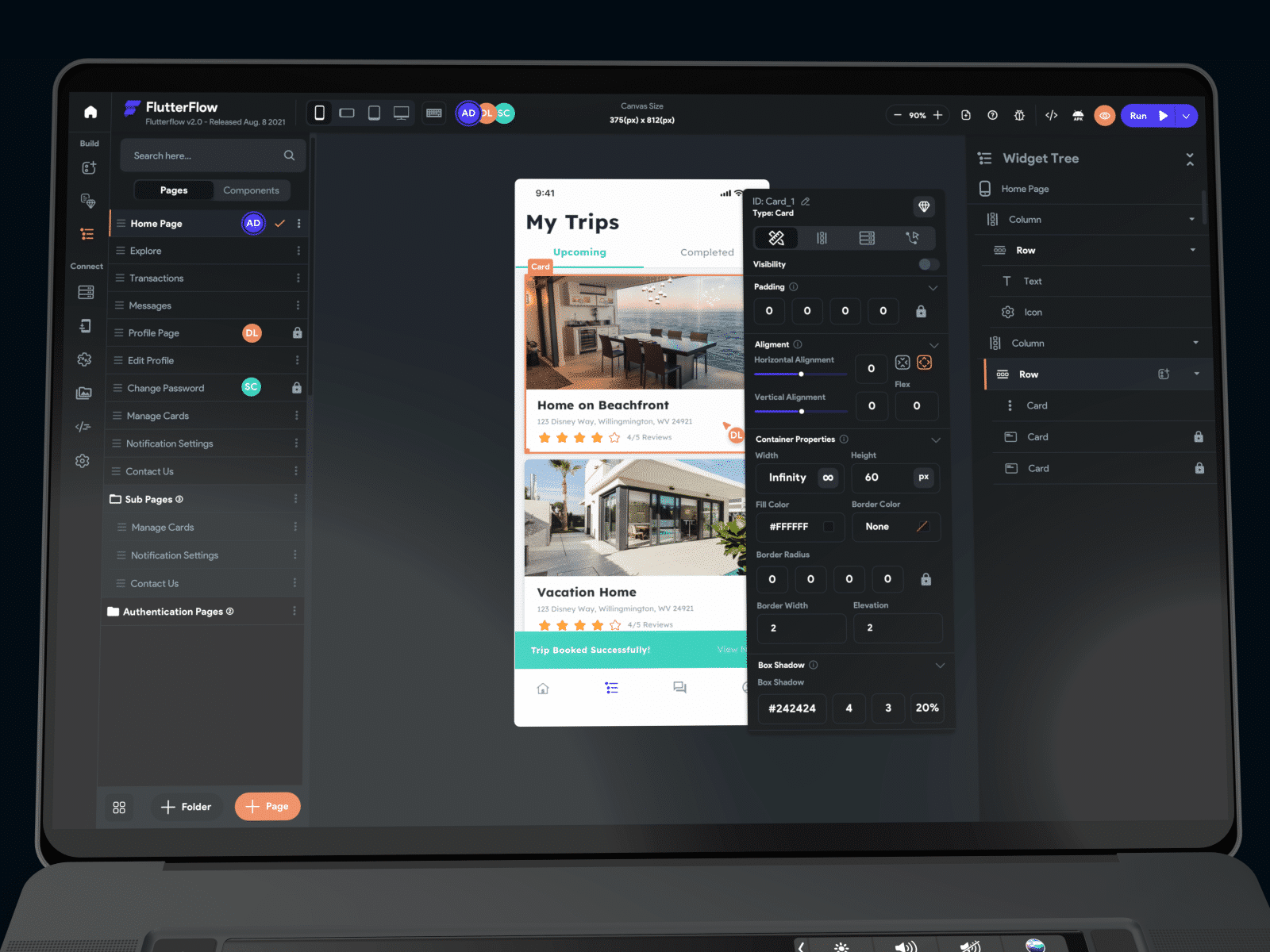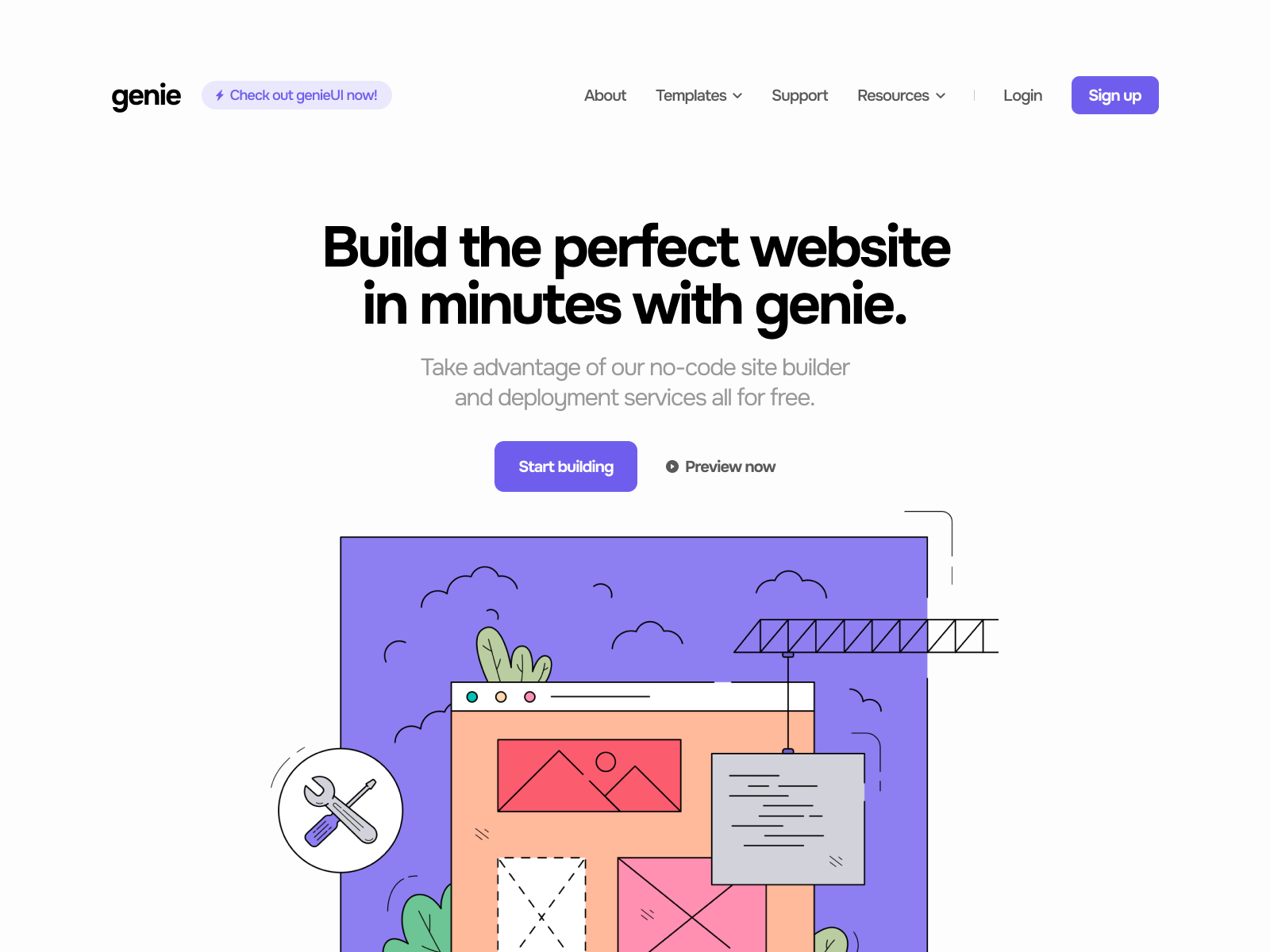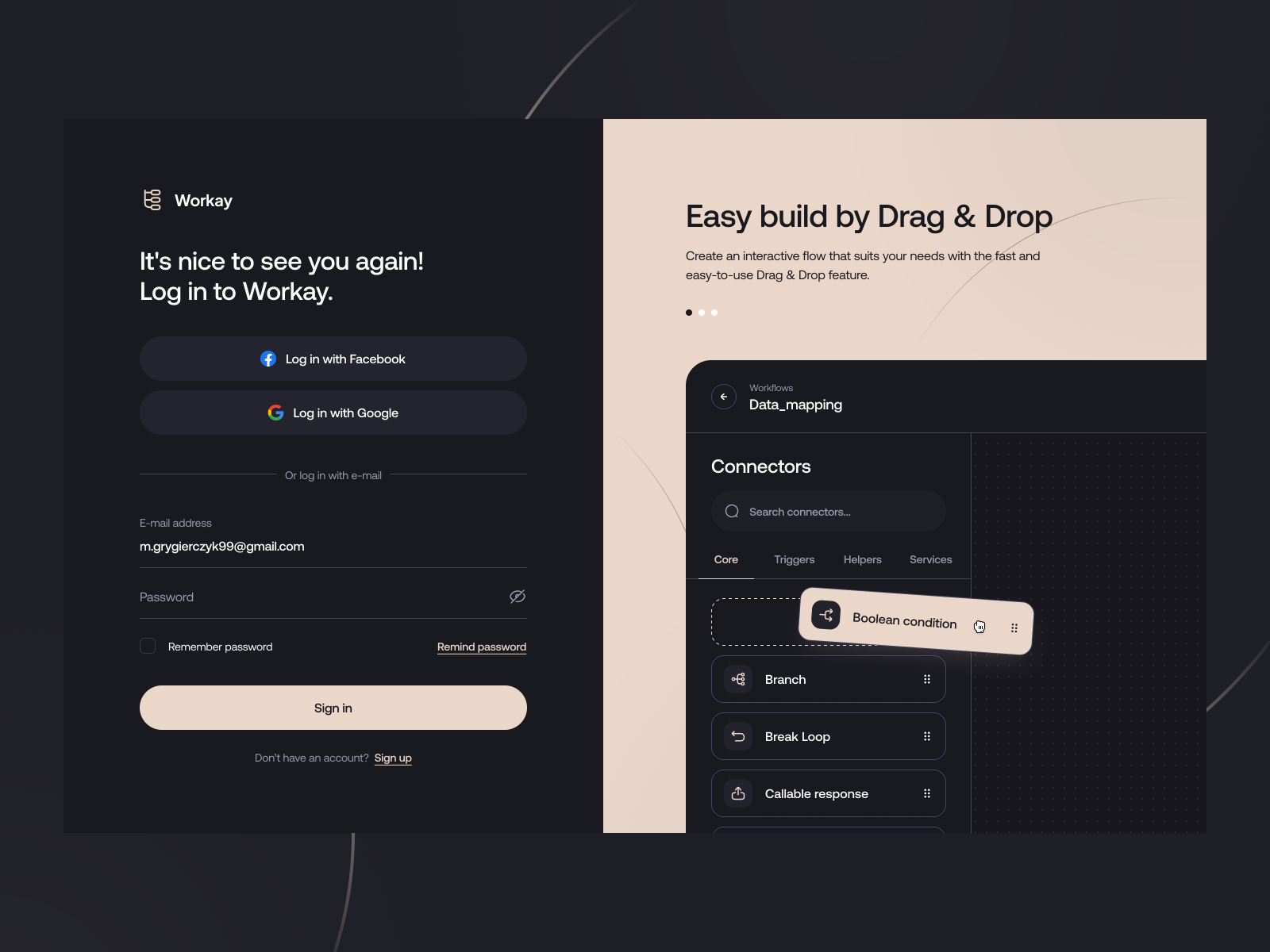Want to simplify the working process and boost the business? Not sure what stack to go for? As a startup founder, choosing the right technology is a critical decision that have a major impact on the success of your company.
Contents:
In the past few years, a wave of low-code and no-code platforms has emerged that make it easier than ever for non-technical users to construct dynamic applications without any programming knowledge. By 2025, around 70% of new apps will likely use these cutting-edge technologies. With so many options available, however, selecting which one is best suited for your startup is difficult.
Let’s explore the key differences between these two tools. You will find tips for choosing a suitable platform for your business and discover the pros and cons of each approach.

No-code constructor design concept by Conceptzilla
Low-code vs. no-code: what is the difference
The first ones are designed to make the process of creating custom applications faster and easier. These technologies provide pre-built templates and drag-and-drop functionality, allowing people with little or no technical expertise to build projects without writing any code. However, you still need programming knowledge, if you want more flexibility and customization.
With this technology, you really level up your workflow. According to recent data, low-code has helped developers achieve an additional $19.8 million in annual revenue and raised their overall productivity by 123%. As a result, enterprises interested in creating apps rapidly and cost-effectively find these systems to be compelling options.
No-code platforms are a bit different. They rely on visual graphical interfaces and easy drag-and-drop mechanisms. They do not require any programming skills. However, it’s important to remember that this stack is normally better suited for minor or uncomplicated tasks since it may not cover complex necessities brought on by successful startups.
A major contrast between no-code and low-code platforms is the ease of customization as well as integration with existing systems. One-click solutions have fewer options for customizing but are relatively easy to integrate into other programs or information. In the case of advanced software, users easily modify their creations but might need more technical skills to link them up with different systems or data.
Pros and cons of each stack
Just like any technology, the tools have their own unique benefits and drawbacks. So they are suitable for specific tasks only. Let’s identify some of the pros and cons of each approach.
Low-code stack
Pros:
- Allows companies to create applications quickly and easily
- Requires less technical expertise than traditional development methods
- Offers advanced features and customization
- Reduces development costs and time to market
- Helps you innovate and stay competitive
Cons:
- Requires a significant investment in terms of money and time
- Difficult to integrate with existing systems and data
No-code stack
Pros:
- Suitable for people with no technical background
- Offers a range of pre-built modules and tools for building applications
- More affordable than low-code
- Helps businesses save time and resources
- Allows you to create simple applications quickly and easily
Cons:
- May not be suitable for very complex or specialized applications
- Has limited customization options compared to low-code platforms
- Requires additional tools or services to support more advanced features
As you see, each technology has its own advantages. By selecting the one that fits into your own business strategy and complements the strengths, you create a bigger impact on the market.

Low-code app builder by Andrew Daniels
How to choose the best stack for your startup
When selecting between low-code and no-code for your business, there are a few key considerations to keep in mind:
- Your specific needs and goals: advanced tools are typically better suited for more complex or specialized projects, while no-code stacks are better for simpler, more streamlined projects.
- Skill level of your team: if your team has limited technical expertise, a no-code platform might be a better fit. In case your developers are skilled professionals, a service with an extensive toolkit might be a better option, as it allows for more advanced customization and integration.
- Your expenditures and income: services with no technical skill requirements tend to be less expensive than others. So if you’re working with a limited budget, no-code software might be a good option. If you have a larger budget and need more advanced features and capabilities, a low-code platform might be a better fit.
- Long-term plans: both stacks can help your startup grow and scale more efficiently, but they also require a commitment in terms of both money and time. Consider long-term plans for your company and choose a platform that will support your growth and development.
- Take into account the financial and technical assistance: your team will still need to find tutorials, community forums, and comprehensive documentation. It’s important to pick a service that gives you access to the tools and resources you’ll use to get started and keep going.
Ultimately, the best way to choose the low-code or no-code platform for your startup is to carefully assess your unique requirements and objectives, and pick the option that offers the greatest degree of compatibility between the two.

Genie concept by Kevin Manjit
Your business model also matters
Whether you’re a marketing agency, an e-commerce company, or a SaaS startup — both approaches are beneficial for your organization. However, the kind of venture you head will decide which software is most suitable to meet your requirements. Here are some general examples of what kind of businesses it is best to use these stacks.
Low-code platforms:
- Do you run a retail business? To create a custom inventory management system to track products across multiple stores, you can use a low-code platform. It will allow non-technical employees to manage product data, set up automatic reordering rules, and generate reports.
- If you are a healthcare organization, you might need an EMR system for patient data storage and management. Use a low-code platform to create a system where medical professionals can enter and update patient information, view medical records, and administer prescriptions.
- A manufacturing business can also benefit from using the above technology. For example, develop an internal production planning and tracking system. It would then help businesses with production planning and scheduling, as well as tracking and reporting.
No-code platforms:
- If you a running a small business that is just getting on its feet, no-code will be helpful. First of all, your company needs to build a basic webpage to introduce its offerings to potential customers. Use a no-code tech stack to build it and upload content like text and graphics without learning programming languages.
- A non-profit organization can benefit from this technology and create a custom database to manage information about its volunteers. With such a tool, its employees can enter and update volunteer information, track volunteer hours, and generate reports.
- As an event app product owner, check out a no-code platform to build a custom registration form for an upcoming conference. So the attendees can register and pay online, while you manage the event logistics and communicate with the speakers.
- Marketing agencies will also benefit from these tools. In this case, you can create custom instruments for managing social media campaigns or analyzing customer data. For example, schedule and publish social media posts, track the performance of the campaigns, and analyze customer data. Using a no-code platform, you can build the tool quickly and easily without needing to hire expensive developers or learn complex programming languages.
In both cases, small and medium-sized businesses would use low-code or no-code platforms to create custom applications that meet their specific needs without having to hire expensive developers or learn complex programming languages. These tools also help you save precious time and cut development costs.

Workay – low-code automation by Marcin Grygierczyk
Budget
The platform cost varies depending on a number of factors. However, some research suggests that no-code platforms tend to be less expensive than low-code ones.
If we take twelve, then the average cost is around $25 per user per month. For an advanced service, it will be higher — around $100 per user per month. So the first one might be a more affordable option.
Of course, the actual cost will depend on the specific features and capabilities that you need, as well as the number of users and the contract length. Some companies offer discounts for startups and small businesses, so it’s worth shopping around and comparing prices to find the best deal.
In addition to the upfront payments, you should also consider the long-term costs and benefits. To prepare a detailed budget for your product, use Project Calculator. You will be able to calculate average prices for different parts of your project like design, development, or branding. As a result, you will see how much resources you can spend on a platform.
Conclusion
Low-code and no-code services are gaining popularity among companies as they offer a faster and more cost-effective way to create custom applications. These tools provide a range of pre-built modules that make it easy for non-technical users to build and manage their own apps without needing to know how to code. As a result, firms are able to develop projects faster than with traditional methods and reduce development costs.
Do you need a hand with developing your product? Contact us to build custom applications quickly and easily to grow your business.
